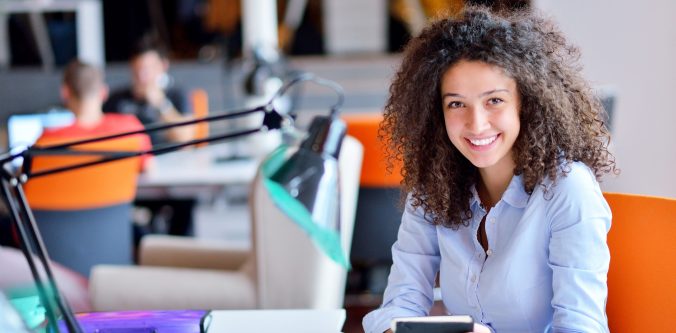How to Design a Great Employee Experience

Employee Experience is becoming even more of a strategic focus for companies as they find themselves facing one or more of the following challenges:
- They are in a highly competitive market and they need an employee experience that helps them attract top talent
- Attrition is high and they are losing good employees
- Moral is low and they are hearing complaints about challenges getting things done
- Their CX measures are low and they suspect that Employee Experience could be a factor
We are all about designing great human experiences – whether those humans are employees, customers, partners, etc. When our clients come to us for help building a better employee experience, we approach it in a similar way to how we approach designing any great experience — through immersion and empathy, co-creation and ideation, testing ideas and concepts, and strategy and action planning.
Going Deep: Immersion and Empathy
We start by immersing ourselves in the challenge. We believe in getting out there and listening to employees, observing their world, and asking the tough questions. We do this using a variety of methods, including one-on-one interviews, work place observations, focus groups, and video interviews.
We meet the employees where they are and listen to them where and when they feel most comfortable. This may mean going to China to listen to and observe contact center agents as they walk us through the technology challenges they face while trying to get their job done and the stress that occurs when they can’t meet KPIs or customers’ needs. Or facilitating a focus group with employees of a global financial services company where they tell us about how they feel they don’t have a clear path to move their career forward and how that leads to them feeling uncertain about their future. Or conducting one-on-one interviews with managers at a software firm who feel like everyone is in silos and peers aren’t listening to each other and how that leads to daily frustration about being able to get work done.
Our goal is to deeply understand their world so we can build empathy, better diagnose the problems, and take those insights into designing an approach for a better experience.
Working Together: Co-Creation and Ideation
After we have a better understanding of the challenge and have built empathy, we engage employees in the process of co-creating solutions for a better employee experience. We believe that it is important to include employees in this process just like we include customers. We typically do this in a series of ideation workshops that bring together employees from all parts of the organization to participate in hands on exercises and games that are designed to draw out creative ideas for solutions to the challenges. We also bring in our designers who can generate prototypes of ideas so we can get iterative feedback quickly.
Getting Feedback: Testing Ideas and Prototypes with Employees
The next step is to get the ideas and protypes in front of a broader set of employees to get their feedback and input on what works, doesn’t work and how they feel the ideas or concepts could be improved upon. Much like customer research this can be done in focus groups, interviews, online surveys, or digital platforms. This is often an iterative process that includes refining the ideas and prototypes during the feedback process.
Putting it Into Action: Strategy and Action Planning
Our final phase is strategy and action planning with the leadership teams who are going to execute on solutions. We create custom and interactive workshops designed to develop clear priorities, strategies, and action plans. We immerse the teams in the insights and the ideas to build deeper empathy for their employees and what they want their experience to look like. We approach the immersion using tools such as artifact galleries, video highlight reels, and interactive games and exercises. Sometimes this involves some further ideation to build upon the ideas and prototypes generated by the employees.
We then take everyone through a series of prioritization exercises to determine focus areas. We work the with the teams to develop clear actions and next steps as a result of the work. We believe this final step is often the most important in making sure everything that has been done is actionable and results in real improvements to the employee experience.
A final note on all of this – remember that Employee Experience is an ongoing effort that needs to remain a focus – you want to keep listening, having conversations with your employees, building empathy as well as continuing to test and measure the results of the solutions, programs and experiences you launch. Also, the insights from this type of work and more in-depth employee insights gathering can be used to create employee journey maps for ongoing ideation and improvements. Stay tuned for my next blog post where I will talk about employee journey maps as another tool for facilitating a better Employee Experience.
::::::::::::::::::::::::::::::::
I love chatting about creative approaches to designing better human experiences, reach out if you want to talk!
Sara Dougherty
sara@clearworks.net